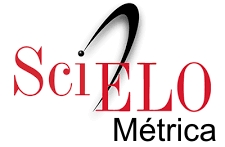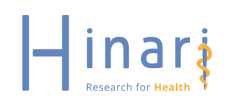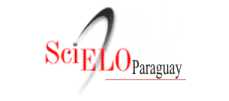Manejo terapéutico farmacológico actual en la hipertensión arterial sistémica del adulto
Resumen
El tratamiento con agentes farmacológicos de la hipertensión arterial sistémica (HTA) produce una disminución significativa de las complicaciones cardiovasculares. La terapia antihipertensiva farmacológica produce una reducción del riesgo relativo de casi 50% en la incidencia de insuficiencia cardíaca, una reducción del riesgo relativo de ictus de hasta 40%, y de hasta 25% de reducción del riesgo relativo en el infarto de miocardio. El grado de reducción de la presión arterial, no la elección de la medicación antihipertensiva, es el principal determinante de la reducción del riesgo cardiovascular en pacientes con HTA. La terapia de combinación con fármacos de diferentes clases tiene un efecto de reducción de la presión arterial sustancialmente mayor que la duplicación de la dosis de un solo agente. Sin embargo, el riesgo de efectos adversos, costos e inconvenientes para el paciente aumentan a medida que se agregan más medicamentos antihipertensivos. El objetivo es realizar una revisión narrativa sobre el manejo terapéutico farmacológico actual de la HTA del adulto.
Citas
2. Asgedom SW, Amanuel K, Gidey MT, Niriayo YL, Gidey K, Atey TM. Treatment resistant hypertension among ambulatory hypertensive patients: A cross sectional study. PLoS ONE. 2020; 5(4): e0232254. https://doi.org/10.1371/journal.pone.0232254.
3. Bress AP, Tanner RM, Hess R, Colantonio LD, Shimbo D, Muntner P. Generalizability of SPRINT results to the US adult population. J Am Coll Cardiol. 2016; 67(5):463-472. doi:10.1016/j.jacc.2015.10.037.
4. Cheung BMY, Or B, Fei Y, Tsoi MF. A 2020 vision of hypertension. Korean Circ J. 2020; 50(6):469-475. https://doi.org/10.4070/kcj.2020.0067.
5. Ramirez MO, Pino CT, Furiasse LV, Lee AJ, Fowkes FG. Paraguayan national blood pressure study: prevalence of hypertension in the general population. J Hum Hypertens. 1995; 9(11):891-897.
6. Lewington S, Clarke R, Qizilbash N, Peto R, Collins R. Age-specific relevance of usual blood pressure to vascular mortality: a meta-analysis of individual data for one million adults in 61 prospective studies. Lancet. 2002; 360 (9349): 1903-13. https://doi.org/10.1016/s0140-6736(02)11911-8.
7. James PA, Oparil S, Carter BL, Cushman WC, Dennison-Himmelfarb C, Handler J, et al. 2014 Evidence-based guideline for the management of high blood pressure in adults: report from the panel members appointed to the Eighth Joint National Committee (JNC 8). JAMA. 2014; 311(5):507-20. https://doi.org/10.1001/jama.2013.284427.
8. Kearney PM, Whelton M, Reynolds K, Muntner P, Whelton PK, He J. Global burden of hypertension: analysis of worldwide data. Lancet. 2005; 365(9455):217-23. https://doi.org/10.1016/s0140-6736(05)17741-1.
9. Ortellado Maidana J, Ramirez A, Gonzalez G, Olmedo Filizzola G, Ayala de Doll M, Sano M, et al. Consenso paraguayo de hipertensión arterial 2015. Rev. virtual Soc. Parag. Med. Int /Internet/. 2016 /citado 19 Feb 2020/; 3(2):11-57.Disponible en: http://scielo.iics.una.py/pdf/spmi/v3n2/v3n2a02.pdf.
Doi:10.18004/rvspmi/2016.03(02)11-0572312-3893/
10. Whelton PK, Carey RM, Aronow WS, Casey DE, Collins KJ, Himmelfarb ChD et al. 2017 ACC/AHA/AAPA/ABC/ACPM/ AGS/APhA/ASH/ ASPC/NMA /PCNA Guideline for the Prevention, Detection, Evaluation, and Management of High Blood Pressure in Adults: Executive Summary: A Report of the American College of Cardiology/American Heart Association Task Force on Clinical Practice Guidelines. Circulation. 2018; 138(17):e426-e483. https://doi.org/10.1161/CIR.0000000000000597.
11. Beevers G, Lip GY, O'Brien E. ABC of hypertension: Blood pressure measurement. Part II-conventional sphygmomanometry: technique of auscultatory blood pressure measurement. BMJ. 2001; 322(7293): 1043-7. https://doi.org/10.1136/bmj.322.7293.1043.
12. Myers MG. A proposed algorithm for diagnosing hypertension using automated office blood pressure measurement. J Hypertens. 2010; 28(4): 703-8. https://doi.org/10.1097/hjh.0b013e328335d091.
13. Forman JP, Stampfer MJ, Curhan GC. Diet and Lifestyle Risk Factors Associated With Incident Hypertension in Women. JAMA. 2009; 302(4): 401-11. https://doi.org/10.1001/jama.2009.1060.
14. Berger-Klein J. What's new in the ESC 2018 guidelines for arterial hypertension: The ten most important messages. Wien Klin Wochenschr. 2019; 131(7-8):180-185. https://doi.org/10.1007/s00508-018-1435-8.
15. Mansfield KE, Nitsch D, Smeeth L, Bhaskaran K, Tomlinson LA. Prescription of renin-angiotensin system blockers and risk of acute kidney injury: a population-based cohort study. BMJ Open. 2016; 6(12): e012690. doi:10.1136/bmjopen-2016-012690.
16. Fei Y, Tsoi MF, Cheung BM. Determining the optimal systolic blood pressure for hypertensive patients: a network meta-analysis. Can J Cardiol. 2018; 34(12):1581-9. https://doi.org/10.1016/j.cjca.2018.08.013.
17. Gulla C, Flo E, Kjome RL, Husebo BS. Deprescribing antihypertensive treatment in nursing home patients and the effect on blood pressure. J Geriatr Cardiol. 2018; 15(4):275-83. https://doi.org/10.11909/j.issn.1671-5411.2018.04.011.
18. García Bello LB, Pederzani LM, Fretes A, Centurión OA. Características clínicas de los pacientes con crisis hipertensivas que acuden a un Servicio de emergencias médicas. Rev. virtual Soc. Parag. Med. Int /Internet/. 2020 /citado 20 Feb 2020/; 7 (1):42-9. Disponible en:
https://www.revistaspmi.org.py/index.php/rvspmi/article/view/154/157
https://doi.org/10.18004/rvspmi/2312-3893/2020.07.01.42-049.
19. Calhoun DA, Booth JN, Oparil S, Irvin MR, Shimbo D, Lackland DT, et al. Refractory hypertension: determination of prevalence, risk factors, and comorbidities in a large, population-based cohort. Hypertension. 2014; 63(3):451–8. https://doi.org/10.1161/hypertensionaha.113.02026.
20. Alderete Martínez JF, Centurión OA. Etiopatogenia e implicancia pronóstica en el infarto de miocardio sin obstrucción de las arterias coronarias epicárdicas (MINOCA). Rev. virtual Soc. Parag. Med. Int /Internet/. 2020 /citado 19 Feb 2020/; 7(1):86-95. Disponible en:
https://www.revistaspmi.org.py/index.php/rvspmi/article/view/159/162.
https://doi.org/10.18004/rvspmi/2312-3893/2020.07.01.86-095.
21. Qaseem A, Wilt TJ, Rich R, Humphrey LL, Frost J, Forciea MA. Pharmacologic treatment of hypertension in adults aged 60 years or older to higher versus lower blood pressure targets: a clinical practice guideline from the American College of Physicians and the American Academy of Family Physicians. Ann Intern Med. 2017; 166(6):430-7. https://doi.org/10.7326/M16-1785.
22. Chavez Alonso CO, Centurión OA. Conceptos epidemiológicos, manejo diagnóstico y farmacológico de la insuficiencia cardiaca congestiva crónica. Rev. virtual Soc. Parag. Med. Int /Internet/. 2019 /citado 18 Feb 2020/; 6 (1):75-85. Disponible en:
https://www.revistaspmi.org.py/index.php/rvspmi/article/view/22/22
23. He FJ, Li J, Macgregor GA. Effect of longer term modest salt reduction on blood pressure: Cochrane systematic review and meta-analysis of randomised trials. BMJ. 2013; 346: f1325. https://doi.org/10.1136/bmj.f1325.
24. Appel LJ, Brands MW, Daniels SR, Karanja N, Elmer PJ, Sacks FM. Dietary approaches to prevent and treat hypertension: a scientific statement from the American Heart Association. Hypertension. 2006; 47(2): 296-308. https://doi.org/10.1161/01.HYP.0000202568.01167.B6.
25. Gupta R, Yusuf S. Towards better hypertension management in India. Indian J Med Res /Internet/. 2014 /cited 2020 Feb 10/; 139(5):657–60. Available from: http://www.ncbi.nlm.nih.gov/pmc/articles/pmc4140027/
26. Calhoun DA, Jones D, Textor S, Goff DC, Murphy TP, Toto RD, et al. Resistant hypertension: diagnosis, evaluation, and treatment: a scientific statement from the American Heart Association Professional Education Committee of the Council for High Blood Pressure Research. Circulation. 2008; 117(25):e510–26. https://doi.org/10.1161/circulationaha.108.189141.
27. van der Wardt V, Harrison JK, Welsh T, Conroy S, Gladman J. Withdrawal of antihypertensive medication: a systematic review. J Hypertens. 2017; 35(9):1742-9. https://doi.org/10.1097/HJH.0000000000001405.
28. Sieg-Dobrescu D, Burnier M, Hayoz D, Brunner HR, Waeber B. The return of increased blood pressure after discontinuation of antihypertensive treatment is associated with an impaired post-ischemic skin blood flow response. J Hypertens. 2001; 19(8):1387-92. https://doi.org/10.1097/00004872-200108000-00006.
29. Elmer PJ, Obarzanek E, Vollmer WM, Simons-Morton D, Stevens VJ, Rohm Young D, et al. Effects of comprehensive lifestyle modification on diet, weight, physical fitness, and blood pressure control: 18-month results of a randomized trial. Ann Intern Med. 2006; 144(7): 485-95. https://doi.org/10.7326/0003-4819-144-7-200604040-00007.
30. Mancia G, Fagard R, Narkiewicz K, Redon J, Zanchetti A, Böhm M, et al. 2013 ESH/ESC Guidelines for the management of arterial hypertension: the Task Force for the management of arterial hypertension of the European Society of Hypertension (ESH) and of the European Society of Cardiology (ESC). J Hypertens. 2013; 31(7): 1281-357. https://doi.org/10.1097/01.hjh.0000431740.32696.cc
31. Chobanian AV, Bakris GL, Black HR, Cushman WC, Green LA, Izzo JL, et al. The Seventh Report of the Joint National Committee on Prevention, Detection, Evaluation, and Treatment of High Blood Pressure: the JNC 7 report. JAMA. 2003; 289(19): 2560-72. https://doi.org/10.1001/jama.289.19.2560.
32. Reboussin DM, Allen NB, Griswold ME, Guallar E, Hong Y, Lackland DT, et al. Systematic Review for the 2017 ACC/AHA/AAPA/ABC/ ACPM/AGS/APhA/ ASH/ ASPC/NMA/PCNA Guideline for the prevention, detection, evaluation, and management of high blood pressure in adults: A report of the American College of Cardiology/American Heart Association task force on clinical practice guidelines. Hypertension. 2018; 71(6): e116-e135. https://doi.org/10.1161/HYP.0000000000000067
33. Angeli F, Reboldi G, Trapasso M, Gentile G, Pinzagli MG, Aita A, Verdecchia P. European and US guidelines for arterial hypertension: similarities and differences. Eur J Intern Med. 2019; 63:3-8.
https://doi.org/10.1016/j.ejim.2019.01.016.
34. Turnbull F, Neal B, Ninomiya T, Algert C, Arima H, Barzi F, et al. Effects of different regimens to lower blood pressure on major cardiovascular events in older and younger adults: meta-analysis of randomised trials. BMJ. 2008; 336 (7653): 1121-3. https://doi.org/10.1136/bmj.39548.738368.BE.
35. Law MR, Morris JK, Wald NJ. Use of blood pressure lowering drugs in the prevention of cardiovascular disease: meta-analysis of 147 randomised trials in the context of expectations from prospective epidemiological studies. BMJ. 2009; 338: b1665. https://doi.org/10.1136/bmj.b1665.
36. Webb AJS, Fischer U, Mehta Z, Rothwell PM. Effects of antihypertensive-drug class on interindividual variation in blood pressure and risk of stroke: a systematic review and meta-analysis. Lancet. 2010; 375 (9718): 906-15. https://doi.org/10.1016/s0140-6736(10)60235-8.
37. Wald DS, Law M, Morris JK, Bestwick JP, Wald NJ. Combination therapy versus monotherapy in reducing blood pressure: meta-analysis on 11,000 participants from 42 trials. Am J Med. 2009; 122(3): 290-300. https://doi.org/10.1016/j.amjmed.2008.09.038.
38. Carey RM, Calhoun DA, Bakris GL, Brook RD, Daugherty SL, Cheryl R Dennison-Himmelfarb ChR, et al. Resistant Hypertension: Detection, Evaluation, and Management: A Scientific Statement From the American Heart Association. Hypertension. 2018; 72(5): e53-e90. https://doi.org/10.1161/hyp.0000000000000084.
39. Wang N, Salam A, Webster R, de Silva A, Guggilla R, Stepien S, et al. Association of low-dose triple combination therapy with therapeutic inertia and prescribing patterns in patients with hypertension: A secondary analysis of the TRIUMPH trial. JAMA Cardiol. 2020. e202739. https://doi.org/10.1001/jamacardio.2020.2739.
40. Oliveria SA, Lapuerta P, McCarthy BD, L’Italien GJ, Berlowitz DR, Asch SM. Physician-related barriers to the effective management of uncontrolled hypertension. Arch Intern Med. 2002; 162(4):413–20. https://doi.org/10.1001/archinte.162.4.413.
41. Sheppard JP, Burt J, Lown M, Temple E, Lowe R, Fraser R, et al. Effect of antihypertensive medication reduction vs usual care on short-term blood pressure control in patients with hypertension aged 80 years and older: The OPTIMISE randomized clinical trial. JAMA. 2020; 323(20):2039-51. https://doi.org/10.1001/jama.2020.4871.
42. Hiremath S, Sapir-Pichhadze R, Nakhla M, Gabor JY, Khan NA, Kuyper LM, et al. Hypertension Canada’s 2020 evidence review and guidelines for the management of resistant hypertension. Can J Cardiol. 2020; 36(5):625-34. https://doi.org/10.1016/j.cjca.2020.02.083.
43. Nelson MR, Reid ChM, Krum H, Ryan P, Wing LMH, McNei JJ, et al. Short-term predictors of maintenance of normotension after withdrawal of antihypertensive drugs in the second Australian National Blood Pressure Study (ANBP2). Am J Hypertens. 2003; 16(1):39-45.
44. Bhatt H, Siddiqui M, Judd E, Oparil S, Calhoun D. Prevalence of pseudoresistant hypertension due to inaccurate blood pressure measurement. J Am Soc Hypertens. 2016; 10(6): 493–9. https://doi.org/10.1016/j.jash.2016.03.186.
45. Taylor BC, Wilt TJ, Welch HG. Impact of diastolic and systolic blood pressure on mortality: implications for the definition of "normal" . J Gen Intern Med. 2011; 26(7): 685-90. https://doi.org/10.1007/s11606-011-1660-6.
46. Bloch MJ, Basile JN. Ambulatory blood pressure monitoring to diagnose hypertension--an idea whose time has come. J Am Soc Hypertens. 2016; 10(2):89-91. https://doi.org/10.1016/j.jash.2015.10.010.
47. Cuspidi C, Lonati L, Macca G, Sampieri L, Fusi V, Severgnini B, et al. Cardiovascular risk stratification in hypertensive patients: impact of echocardiography and carotid ultrasonography. J Hypertens. 2001; 19(3): 375-80. https://doi.org/10.1097/00004872-200103000-00004.
48. Kostis JB, Espeland MA, Appel L, Johnson KC, Pierce J, Wofford JL. Does withdrawal of antihypertensive medication increase the risk of cardiovascular events? Trial of Nonpharmacologic Interventions in the Elderly (TONE) Cooperative Research Group. Am J Cardiol. 1998; 82(12):1501-8. https://doi.org/10.1016/S0002-9149(98)00694-8.
49. O'Mailia JJ, Sander GE, Giles TD. Nifedipine-associated myocardial ischemia or infarction in the treatment of hypertensive urgencies. Ann Intern Med. 1987; 107(2): 185-6. https://doi.org/10.7326/0003-4819-107-2-185.
50. Tataru AP, Barry AR. A systematic review of add-on pharmacologic therapy in the treatment of resistant hypertension. Am J Cardiovasc Drugs. 2017; 17(4):311-8. https://doi.org/10.1007/s40256-017-0224-5.
51. Shin J, Cho MCh. Updated reasons and clinical implications of new korean hypertension guidelines for cardiologists. Korean Circ J. 2020 Jun; 50(6):476-84. https://doi.org/10.4070/kcj.2019.0338.
52. Benetos A, Labat C, Rossignol P, Fay R, Rolland Y, Valbusa F, et al. Treatment with multiple blood pressure medications, achieved blood pressure, and mortality in older nursing home residents: the PARTAGE study. JAMA Intern Med. 2015; 175(6):989-95. https://doi.org/10.1001/jamainternmed.2014.8012.
53. Martin JF, Martin LNC, Cipullo JP. Pharmacologic treatment for prehypertension: to treat or not to treat?. Recent Pat Cardiovasc Drug Discov. 2009; 4(2):133-41. https://doi.org/10.2174/157489009788452904.
54. Pimenta E, Oparil S. Prehypertension: epidemiology, consequences and treatment. Nat Rev Nephrol. 2010; 6(1):21-30. https://doi.org/10.1038/nrneph.2009.191.

















